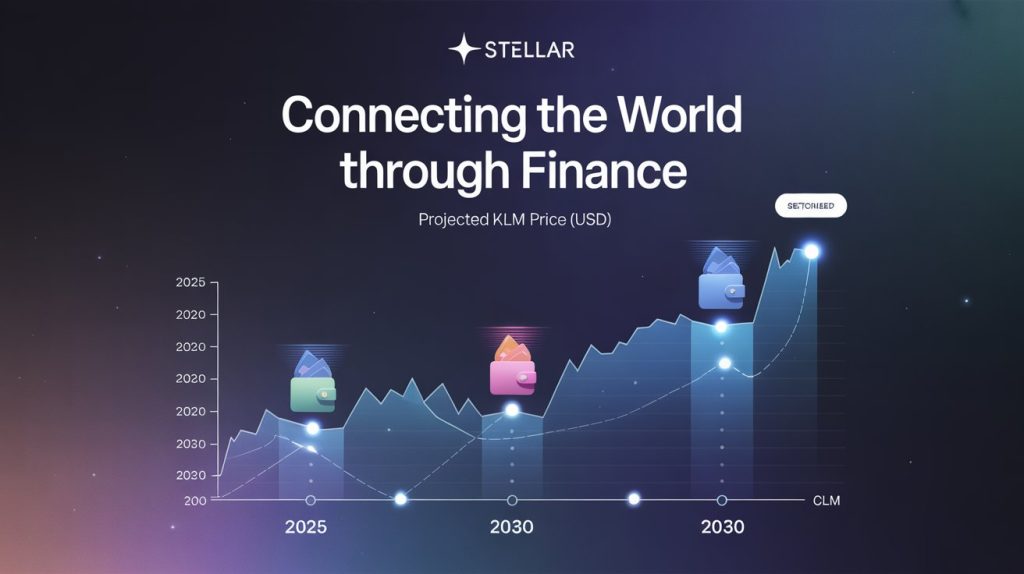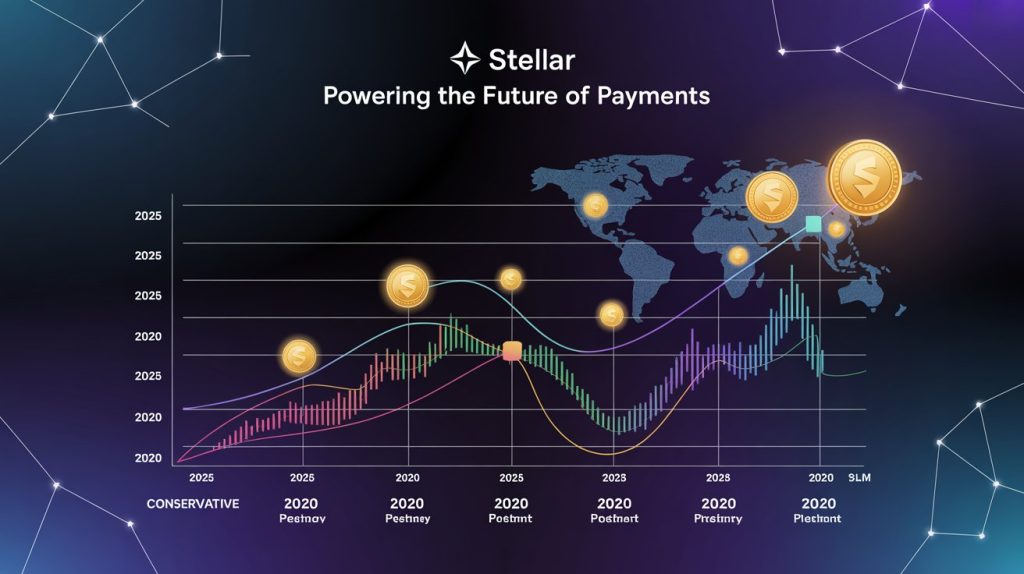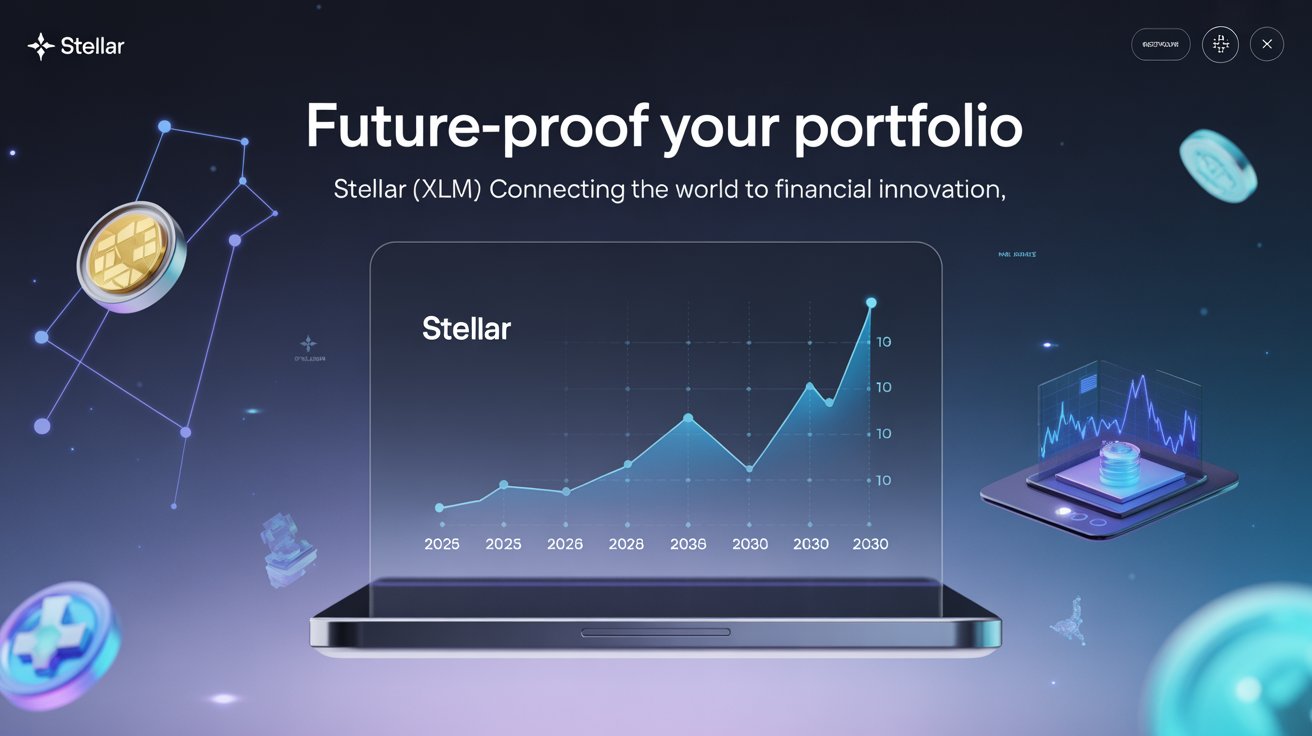Stellar is a decentralized, open-source blockchain network designed to facilitate fast, low-cost cross-border payments and asset transfers. Launched in 2014 by Jed McCaleb, co-founder of Ripple, Stellar aims to connect financial institutions, payment systems, and individuals through its native cryptocurrency, Lumens (XLM). The network allows users to create, send, and trade digital representations of all forms of money—dollars, pesos, bitcoin, and more—seamlessly and efficiently. Its goal is to make financial services more accessible, especially in developing regions.
1. Introduction to Stellar
The world of cryptocurrency is vast and ever-expanding, with blockchain projects emerging to address specific global challenges. One such pioneering platform is Stellar (XLM) — an open-source, decentralized protocol designed to facilitate cross-border transactions quickly, efficiently, and affordably. With the rise in digital payments and international money transfers, Stellar stands as a game-changer.
2. What Is Stellar (XLM)?
Stellar is a blockchain-based payment network that enables the transfer of digital currency to fiat money domestically and across borders. The native cryptocurrency of the Stellar network is Lumens (XLM).
Core Mission: To make financial services accessible to the unbanked and underbanked around the world.
Quick Facts about Stellar (XLM)
| Feature | Details |
|---|---|
| Launch Year | 2014 |
| Founders | Jed McCaleb, Joyce Kim |
| Native Token | Lumens (XLM) |
| Market Cap | Varies (Check real-time data) |
| Consensus Mechanism | Stellar Consensus Protocol (SCP) |
| Use Case | Cross-border payments, remittances, asset issuance |
3. History and Background of Stellar

Stellar was founded in 2014 by Jed McCaleb, one of the original architects of Ripple (XRP), and lawyer Joyce Kim. The Stellar Development Foundation (SDF) was established to support the development and adoption of the Stellar network.
Key Milestones:
- 2014: Stellar network launched.
- 2015: Stellar switched to its own codebase and released SCP.
- 2017–2021: Partnered with IBM, Deloitte, and multiple financial institutions.
- 2023+: Continued growth in DeFi and tokenized asset sectors.
4. Key Features of Stellar
Stellar offers an efficient, low-cost, and fast blockchain network with innovative features:
🔹 Stellar Consensus Protocol (SCP)
- Uses federated Byzantine agreement (FBA).
- Fast, energy-efficient, and secure.
🔹 Multi-Currency Transactions
- Facilitates real-time currency exchange during transactions.
🔹 Anchors and Asset Issuance
- Enables issuing and redeeming fiat-pegged tokens on the network.
🔹 Low Transaction Fees
- 0.00001 XLM per transaction, making it ideal for micropayments.
5. Stellar vs. Ripple (XRP): A Comparative Analysis
| Feature | Stellar (XLM) | Ripple (XRP) |
|---|---|---|
| Target Users | Individuals and institutions | Primarily banks and enterprises |
| Consensus Protocol | SCP | Ripple Protocol Consensus Algorithm |
| Token Supply | ~50 billion (with inflation control) | 100 billion (pre-mined) |
| Decentralization | More decentralized | More centralized |
| Use Cases | Cross-border payments, microtransactions, DeFi | Interbank transfers |
Verdict: While Ripple focuses on institutional clients, Stellar is tailored to the broader population, especially the unbanked.
6. How Stellar Works: The Technical Framework
Stellar operates on a peer-to-peer network of decentralized servers, each storing a ledger of accounts and transactions. Here’s how the system flows:
- User Requests Transaction (e.g., sending USD from the U.S. to someone in Nigeria).
- Anchor Converts USD to XLM.
- Stellar Transfers XLM across the network.
- Receiving Anchor Converts XLM to NGN.
- Recipient Gets Funds in Local Currency.
This process is completed within seconds, offering settlement times far faster than traditional banks or SWIFT.
7. Use Cases and Real-World Applications
Stellar’s flexibility allows it to be used in various sectors:
✅ Cross-Border Remittances
- Used by NGOs and remittance companies to cut costs.
✅ Tokenized Assets
- Issue and trade fiat-backed tokens, like USDC on Stellar.
✅ Mobile Banking and Financial Inclusion
- Brings banking services to underbanked communities in Africa, Asia, and South America.
✅ Partnerships
- IBM World Wire: Stellar powers blockchain-based remittance services for IBM.
- MoneyGram: Stellar aids in crypto-to-cash conversions.
8. Advantages of Using Stellar

Here’s why Stellar is favored by developers, institutions, and users worldwide:
- ✅ Fast transaction speed (2–5 seconds)
- ✅ Extremely low fees
- ✅ Scalable and open-source
- ✅ Eco-friendly (no mining required)
- ✅ Robust developer tools
- ✅ Global accessibility
9. How to Buy and Store Stellar (XLM)
Interested in investing in XLM? Here’s a simple breakdown:
🔹 Where to Buy Stellar (XLM)
| Exchange | Features |
|---|---|
| Binance | High liquidity, global access |
| Coinbase | Beginner-friendly, secure |
| Kraken | Regulatory compliance |
| KuCoin | Advanced trading tools |
🔹 Best Wallets for XLM
| Wallet Type | Wallet Name | Security Level |
|---|---|---|
| Hardware | Ledger Nano X | Very High |
| Mobile | Lobstr | Medium |
| Web | StellarTerm | Medium |
| Multi-Currency | Trust Wallet | High |
10. Stellar Price Prediction and Market Trends
🔸 Current Market Outlook
- XLM price is highly volatile but generally follows broader crypto trends.
- Integration with global payment systems may boost long-term value.
🔸 Expert Price Predictions
| Year | Conservative Forecast | Optimistic Forecast |
|---|---|---|
| 2025 | $0.30 – $0.45 | $0.70 – $1.00 |
| 2030 | $1.00 – $1.50 | $3.00+ |
⚠️ Note: Cryptocurrency investments are speculative. Always conduct personal research.
📈 Stellar (XLM) Price Prediction: 2025 to 2030
| Year | Conservative Prediction | Moderate Prediction | Optimistic Prediction |
|---|---|---|---|
| 2025 | $0.30 – $0.45 | $0.50 – $0.75 | $0.80 – $1.00 |
| 2026 | $0.40 – $0.60 | $0.80 – $1.10 | $1.20 – $1.50 |
| 2027 | $0.60 – $0.90 | $1.20 – $1.50 | $1.80 – $2.50 |
| 2028 | $0.80 – $1.20 | $1.50 – $2.00 | $2.80 – $3.50 |
| 2029 | $1.00 – $1.50 | $2.20 – $2.80 | $3.80 – $5.00 |
| 2030 | $1.20 – $2.00 | $3.00 – $4.50 | $5.50 – $7.00+ |
🔍 Factors Influencing Stellar’s Price Growth
1. 🌍 Real-World Adoption
- Increased use by banks, fintech firms, and remittance services (e.g., MoneyGram, IBM).
- Use in Central Bank Digital Currency (CBDC) experiments.
2. ⚙️ Network Upgrades & Scalability
- Enhancements to Stellar’s speed and lower transaction fees could attract new developers and users.
3. 💰 Institutional Investment
- Entry of hedge funds and institutional investors into XLM can trigger demand spikes.
4. 🌐 Macro Trends in Crypto Market
- Bitcoin bull runs typically lift altcoins like XLM.
- Regulatory clarity will play a critical role in altcoin performance.
5. 💹 Tokenomics & Scarcity
- Fixed supply (~50 billion XLM) may drive long-term scarcity if adoption grows.
🔮 Year-by-Year Breakdown
⭐ 2025 Prediction
- Catalyst: Broader crypto adoption, next Bitcoin halving after-effect.
- Expected Price Range: $0.30 to $1.00
- Outlook: Bullish momentum; Stellar could reach close to $1 if partnerships grow.
⭐ 2026 Prediction
- Catalyst: Global remittance market integration.
- Expected Price Range: $0.40 to $1.50
- Outlook: Moderate increase due to mainstream fintech use.
⭐ 2027 Prediction
- Catalyst: Use in cross-border government and NGO projects.
- Expected Price Range: $0.60 to $2.50
- Outlook: Continued upward trend, more utility.
⭐ 2028 Prediction
- Catalyst: Growth of DeFi and tokenized assets on Stellar.
- Expected Price Range: $0.80 to $3.50
- Outlook: Strong price action driven by utility and scarcity.
⭐ 2029 Prediction
- Catalyst: Blockchain-powered global remittances replacing traditional banking rails.
- Expected Price Range: $1.00 to $5.00
- Outlook: If Stellar captures a major share of global transactions, it could break previous highs.
⭐ 2030 Prediction
- Catalyst: Institutional and sovereign-level adoption.
- Expected Price Range: $1.20 to $7.00+
- Outlook: Stellar might become a backbone for cross-border CBDCs and global finance infrastructure.
⚠️ Risks to Consider
- Regulatory crackdowns on cross-border crypto payments.
- Competition from newer layer-1 blockchains.
- Limited public awareness compared to major coins like Ethereum or Solana.
✅ Summary Table (Condensed)
| Year | Min (Bearish) | Avg (Moderate) | Max (Bullish) |
|---|---|---|---|
| 2025 | $0.30 | $0.65 | $1.00 |
| 2026 | $0.40 | $0.90 | $1.50 |
| 2027 | $0.60 | $1.30 | $2.50 |
| 2028 | $0.80 | $1.80 | $3.50 |
| 2029 | $1.00 | $2.40 | $5.00 |
| 2030 | $1.20 | $3.50 | $7.00+ |
👥 Who Should Invest in Stellar?
Stellar (XLM) is ideal for:
- Long-term holders betting on financial inclusion.
- Investors looking for low-cost remittance-based blockchain plays.
- Traders diversifying their altcoin portfolio with established mid-cap cryptos.
11. Risks and Considerations
While Stellar is a strong project, no investment is without risks:
- 📉 Market Volatility: Prices can drop sharply.
- ⚖️ Regulatory Uncertainty: Changes in laws can affect utility and price.
- 🔓 Security Risks: Though Stellar is secure, wallets and exchanges can be compromised.
- 🧩 Adoption Rate: Success depends on continued partnerships and user base growth.
12. Frequently Asked Questions (FAQs)
Q1: Is Stellar a good investment in 2025?
A: Many experts view Stellar as a long-term investment, especially due to its role in remittances and global finance.
Q2: Can I mine Stellar (XLM)?
A: No, Stellar does not support mining. All tokens were pre-issued at launch.
Q3: Is Stellar better than Bitcoin?
A: Different use cases. Bitcoin is digital gold; Stellar is for fast, low-cost payments.
Q4: Is XLM compliant with regulations?
A: Stellar is focused on compliance, especially through its partnerships with regulated entities like MoneyGram and IBM.
13. Final Thoughts
Stellar (XLM) stands out as a revolutionary blockchain platform designed not only to move money but to empower communities across the globe. Whether you’re a casual crypto user, developer, or investor, Stellar’s low fees, speed, and scalability offer immense value.
By fostering financial inclusion and modernizing international payments, Stellar is truly a star in the cryptocurrency universe.
